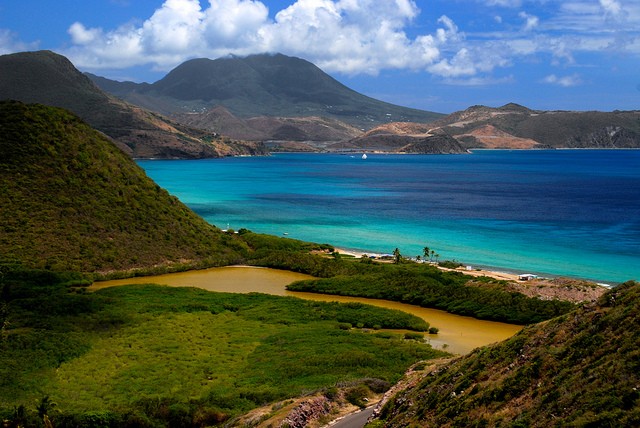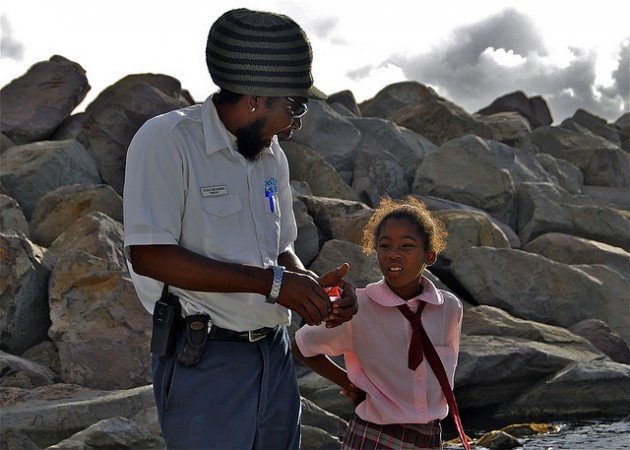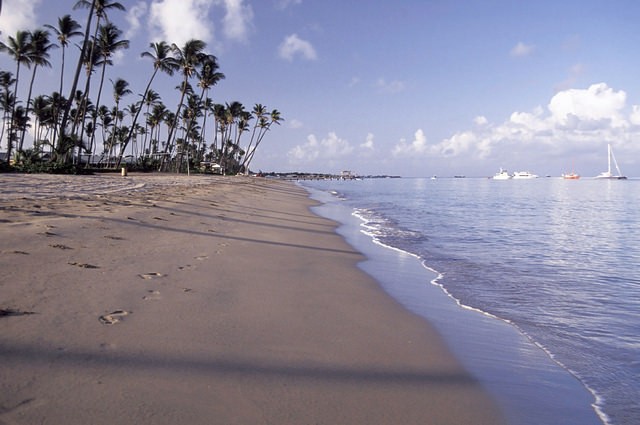 the Travel Enthusiast
the Travel Enthusiast
- 30 May
Adam in Amazing Places | NO COMMENTSSt Kitts and Nevis, The Queen of The Caribbees
St Kitts and Nevis is an island nation situated on the Caribbean. It is part of the Leeward Islands group. It is between St Eustasius( The Netherlands) and Antigua and Barbuda.
The capital city of St Kitts and Nevis is Basseterre. The total area is 261.6 sq km while the coastline is 135 km.
The official and national language is English. The English-Creole is also widely spoken.
The political status is monarchy, the current head of the state being Queen Elizabeth II.
The infrastructure and transportation of the country is relatively good, 50% of the roads being well paved. There are regular passenger ferries between the two islands. The international airport is Robert L. Bradshaw International Airport which lies about 3 km from Basseterre and direct flights can be taken from USA and Canada. The capital has a large deep water port. Cruise ships can be taken from there to other destinations and island countries.
St Kitts and Nevis, being a former British colony and a current member of the Commonwealth of Nations, drives on the left. Cars can be hired from the airport, police stations and car firms. Taxis(most of them having fixed rates) and Buses are available.
Although it faced economical issues, St Kitts and Nevis is still a wealthy country. The primary sectors are tourism, agriculture and light manufacturing industries. St Kits and Nevis was particularly known for its sugarcane cropping industry until the 1970’s, and while it is still in use, it does not play an important role anymore. It highly depends on tourism, and to promote their country and expand their industry, the country hosts its annual St Kitts Music Festival.
- Flights
- Hotels
- Packages
- Cars
- Cruises
travel search by Travelgrove (get this widget)It is a very popular tourist destination, known for its excellent and diverse resorts and beaches, natural landscapes and other noteworthy sites. Some examples of the sights are:
- Brimstone Hill Fortress Park is one of the most outstanding example of a military architecture from the 17th-18th century on the Caribbean hemisphere. It was built by African slave labour and designed by the British.
- Frigate Bay is on of the most popular destinations in St Kitts. It is a bay known for its resorts, beaches and recreational activities.
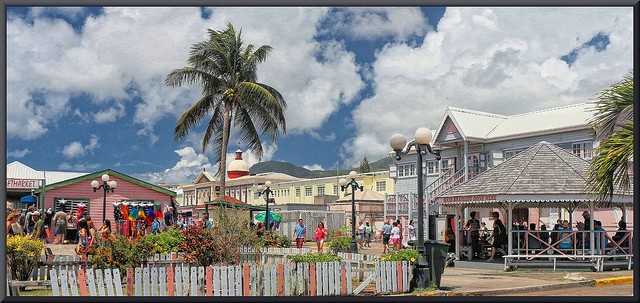
The capital city of St Kitts and Nevis, Basseterre, is known for its large and vibrant life, despite its size ©Dale Morton/flickr
The climate of St Kitts and Nevis is tropical. Like other tropical sites, trade winds are very common. Unlike many Caribbean islands, there is no significant rainy season. Hurricane season, however is common between June and November.
The country is split in two main parts, Nevis and St Kitts. These are mountainous islands with volcanic origin. Most of the islands are filled with ravines and spacious fertile valleys. The highest point is Mount Liamuiga (1,156 meters high). While most of the beaches are of black volcanic sand origin, it also has some beaches with golden sand that are filled with Coconut grooves.
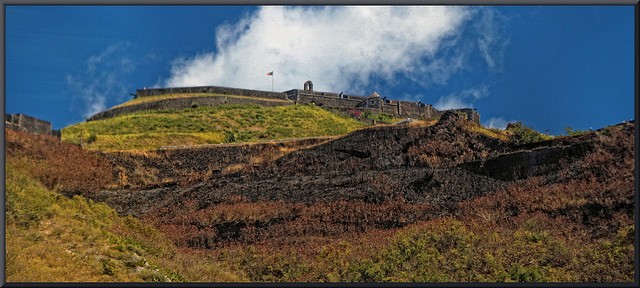
The Brimstone Hill Fortress shining above, one of the best examples of 17-18th century colonial complex ©Dale Morton/flickr
The vegetation is vast and rich. Tropical rain forests are very common, covering around 50% of St Kitts and Nevis’s land. Coconut forests are also widespread. It has many fertile grounds, many fruits(especially bananas and coconuts), sugar and vegetables are being grown. The fauna of the island mainly consists of mongooses and deer, green vervet monkeys, pelicans and hummingbirds.
The total population is 54.000, 32% of them living in urban areas.
The population is mainly of mixed African and European(mostly British) descent.
Most people of St Kitts and Nevis are Christians(Anglicans, Roman Catholics, Methodists and others). Freedom of Religion is granted and respected.
The health care system is good. Infant mortality is 7 per 1.000 live births, being quite low. Clinics, hospitals are widespread throughout the entire island.
The immigration and customs are quite severe. Visas are required for most foreign visitors.
The Brief History of St Kitts and Nevis
The two islands were initially settled by the Amerindian people from South America. It was Christopher Columbus who sighted the island in 1493. By the 17th century, however, it was first colonized by Sir Thomas Warner, and brought enslaved Africans with them to establish sugar plantations that took an important role for the next centuries. At the same time, the other island was colonized by the French who also brought slavery with them. During the 17th and 18th century, Britain and France battled each other to gain the two islands until 1783 when the islands were ceded to Great Britain under the Treaty of Versailles.
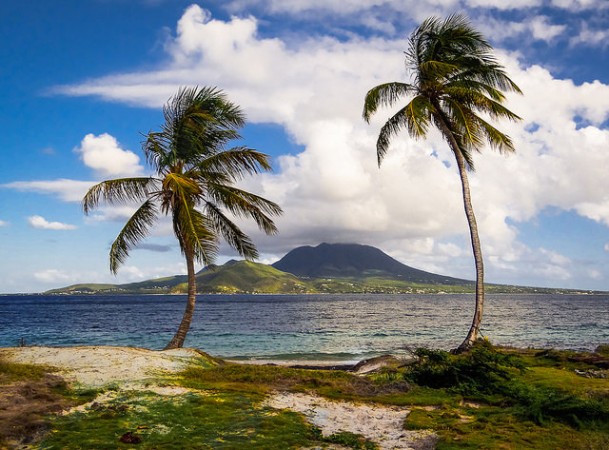
The island of Nevis, as seen from St Kitts, It has one of the most panoramic views on the Caribbean ©ben_leash/flickr
From 1816 these islands were administered along with the British Virgin Islands and Anguilla as a single colony and from 1871 it also became part of the Leeward Islands. By time, the islands achieved prosperity and good rights. However, when the two islands gained the status of association with the UK in 1967. There was a rebellion, Anguilla itself being rejected. In 1971, UK and the other countries agreed that Anguilla will remain a dependency under the British crown.
In 1976 St Kitts and Nevis achieved internal self-government and finally total independence in 1983 from the United Kingdom, although they choose to still remain a constitutional monarchy under Queen Elizabeth II. It also joined the Commonwealth of Nations.
Although throughout the centuries it managed to avoid big wars and bloodshed like most Caribbean islands, it nevertheless, passed through issues. Despite that, it has become a very popular destination, known for its beautiful natural landscapes and friendly people. The island is a definite “worth visit” destination that you should not avoid. The British themselves left a great influence on the island, from culture and traditions to the political system and legislature.
You might also like
